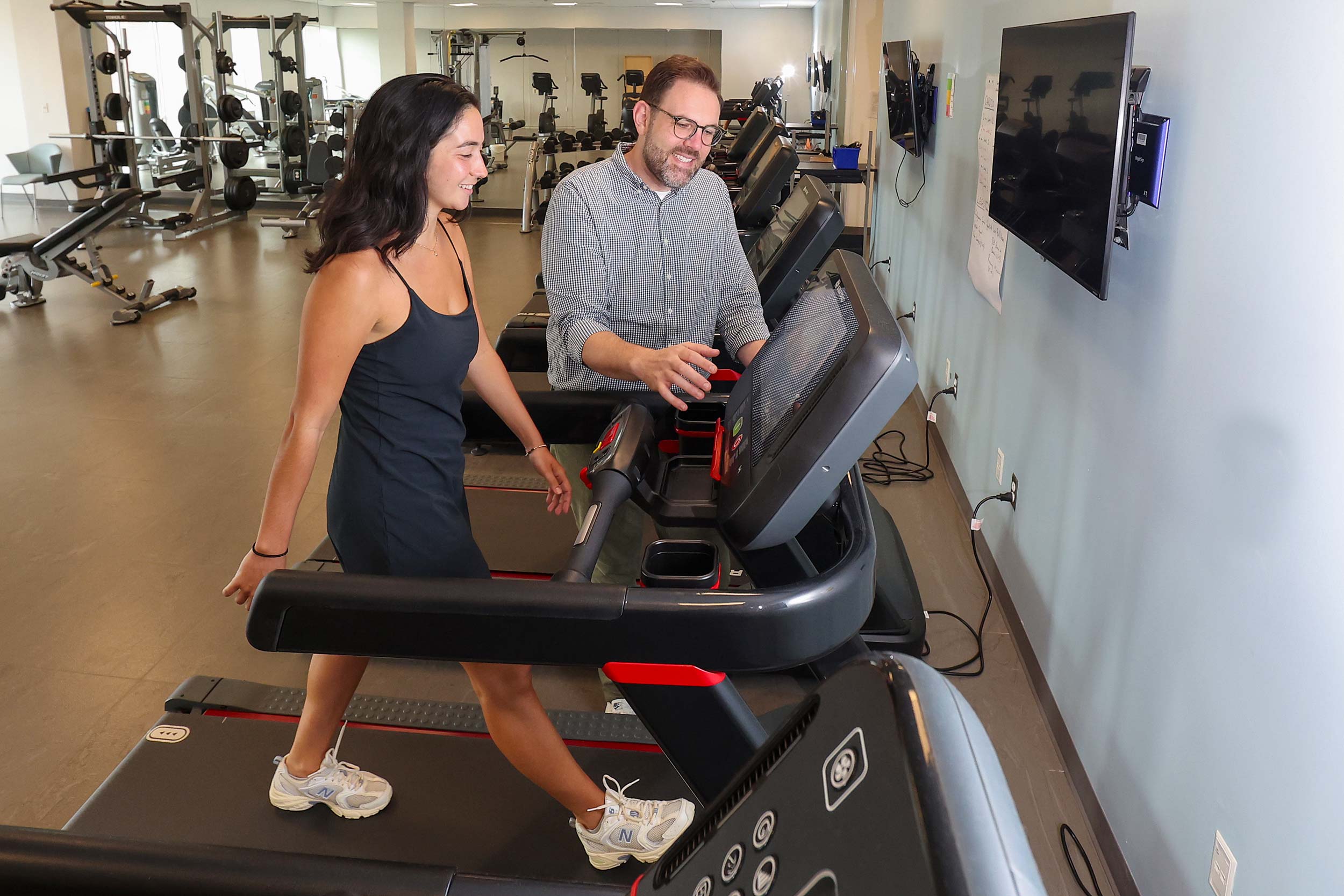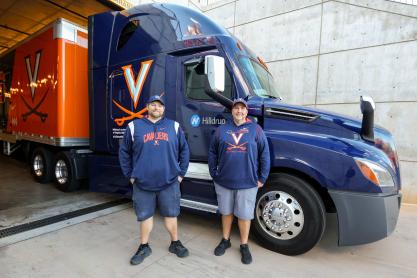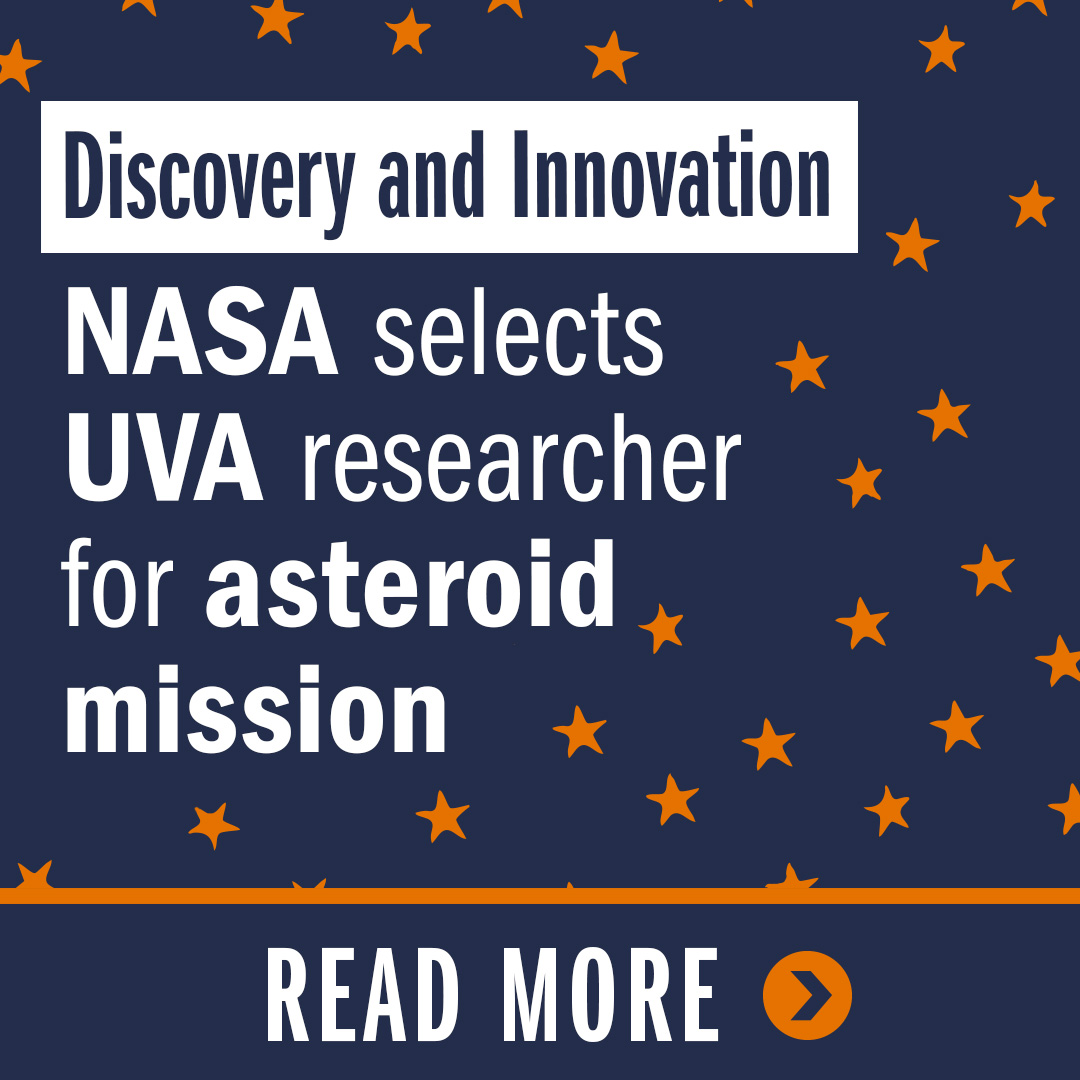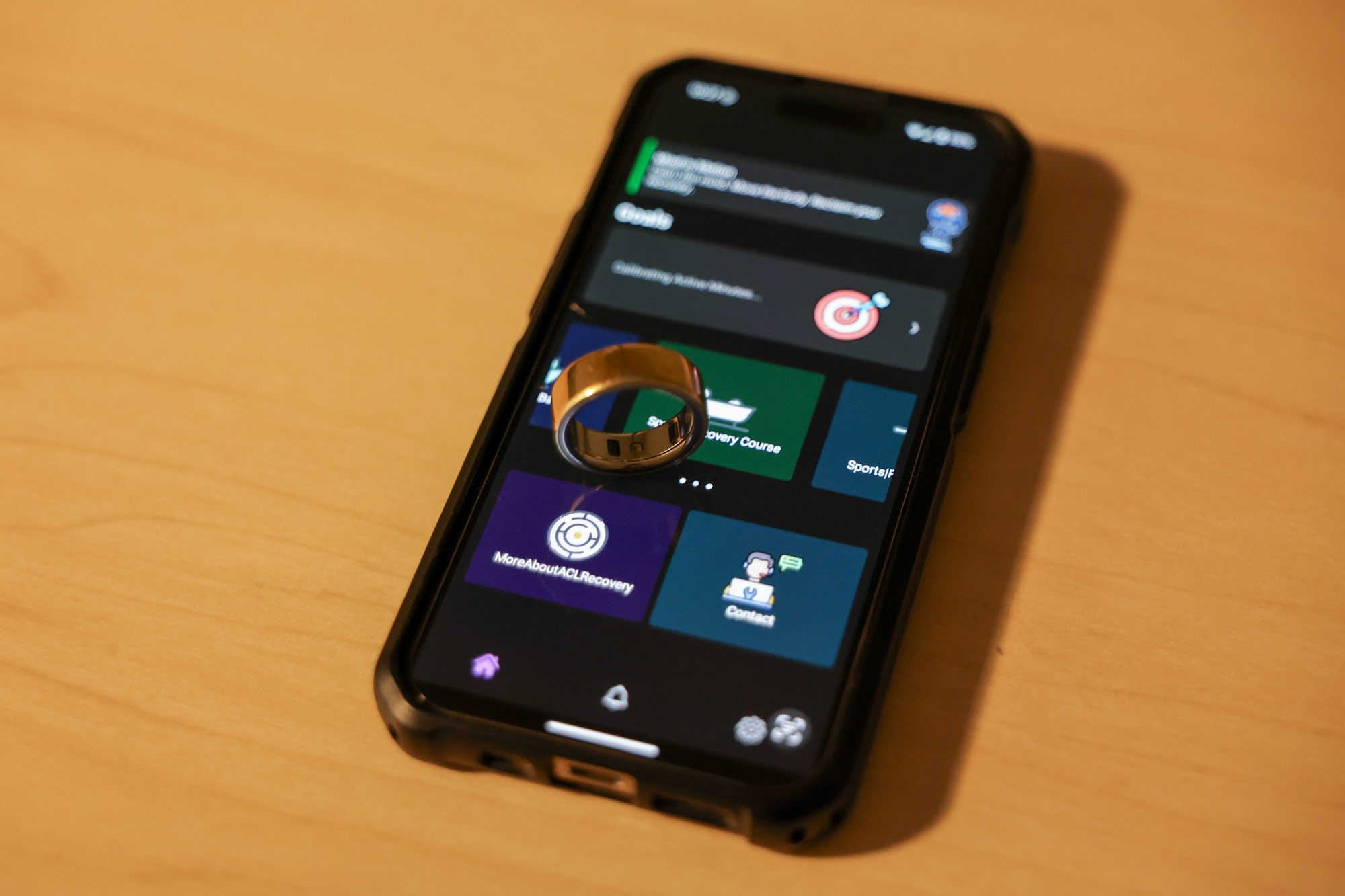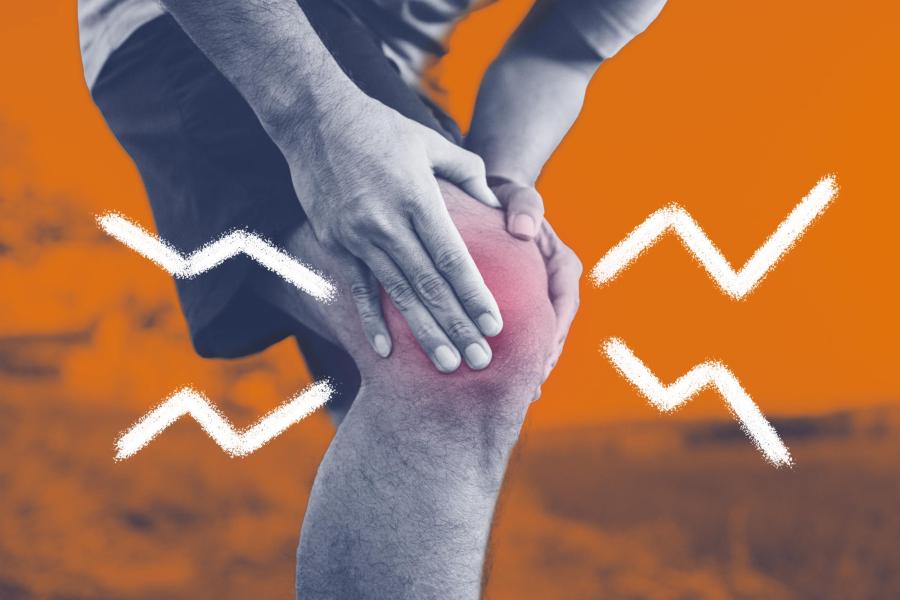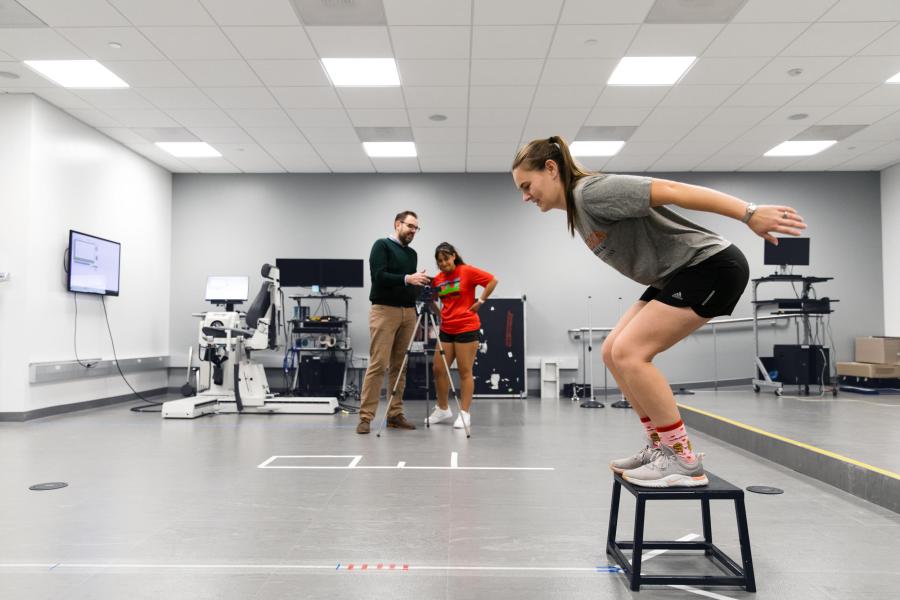When Chris Kuenze was 16, he injured his knee in a backyard accident, keeping him from playing sports during his junior and senior years of high school. Decades later, his injury is still top of mind.
“I am not sure that I ever had a feeling of being recovered,” he said. “There was always a sense that the injury could happen again. I was reminded of that when I would wake up with a stiff knee or experience a little pain while playing pickup basketball that I knew my friends weren’t experiencing.”
Being nervous about returning to play after a knee injury is a common experience. Evidence suggests even when young people are given a green light after physically recovering from an injury, many still struggle to fully trust they are ready.

Kuenze understands patients who recover physically from ACL surgery but still struggle with anxiety about returning to play because he has those same emotions. (Photo by Matt Riley, University Communications)
Now an associate professor of kinesiology at the University of Virginia School of Education and Human Development, Kuenze is focused on helping young people who experience a knee injury mentally and physically recover so they can return to activity.
“Most ACL – anterior cruciate ligament – injuries happen to young people who are really active and participate in jumping, cutting and decelerating sports, like basketball or soccer,” Kuenze said. “These are young people we hope will return to their sport of choice after recovery. But we have found that patients really struggle to be physically active a year or two after surgery.”
Kuenze said when patients recover physically, they are often still struggling with fear, anxiety and a general feeling of distrust that they are ready to return to sports.
With funding from the Jefferson Trust and the Digital Technology Core Seed Grant Program, plus support from the Headspace mindfulness app and the Oura Ring, Kuenze and his colleague, Shelby Baez at the University of North Carolina, Chapel Hill, are launching a pilot study to help individuals to increase activity, both physically and mentally.
To measure current activity levels and estimate how much more movement researchers hope to see, the study uses the Oura Ring fitness tracker. Researchers hope magic happens when they pair the tracking technology with mindfulness exercises in the Headspace app.
